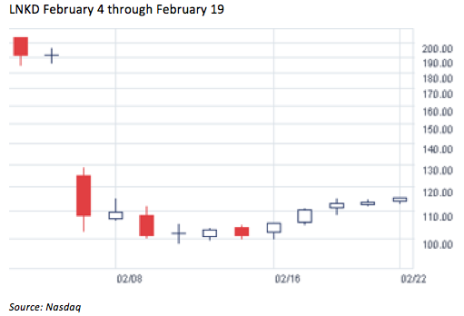Lessons from the Dot-com Bull and Bear Markets
Wait Three Days Before Doing This
Ways to Navigate Market Minefields
---
To say that the start of the 2016 has been challenging for most investors and traders would be an understatement. Yet for many experienced market professionals, this type of action can be quite attractive. While I’ve had my share of bullish positions go south on me during the quick market swoon, I know that this type of volatility creates countless opportunities.
I began my career on the floor of the Chicago Board of Options Exchange in 1999 straight out of college. For a year, I stood next to two trading legends, soaking up all of their wisdom as their clerk. That year, the market ripped higher as virtually every dot-com stock exploded higher day after day. I learned a great deal during that bull run.
Then, soon after I became a trader myself, the Nasdaq fell apart. The dot-com bubble burst, and valuations were reset for virtually the entire market. During those bearish years, I learned even more than during the bull market of the previous years.
And one rule that I took away from the bear years-and that I continue to tell subscribers to Cabot Options Trader and Cabot Options Trader Pro-is about stocks that have taken a big dive.
---
Wait Three Days Before Doing This
The old trading rule that was hammered into my brain by my two trading legend mentors was this:
If a stock took a big fall, whether it was on earnings or some other news event, you MUST wait at least three trading days before even thinking about putting on a bullish position.
The rationale behind this theory is that if a large hedge fund or institution owns millions of shares of a stock, it won’t be able to sell out of their entire position in a day or two without causing the stock to fall.
Instead, the institution will parcel out its sales over a couple of days, so they don’t depress the stock so much that they sell at bad prices. For example, let’s take a look at LinkedIn (LNKD), which fell from 192 to 108 on February 5 on a disappointing earnings release. That was a staggering fall! The next day, the downgrades came pouring in from the brokerage houses (thanks for the downgrades after the fall!).
Based on the three-day trading rule, I wouldn’t have considered adding a bullish position on Friday, February 5, Monday, February 8 or Tuesday, February 9. But on Wednesday, February 10, according to the rule, I could begin to think about adding a bullish position.
Here were LNKD’s closing prices on the day of its earnings report and the following days:
As you can see, there remained selling pressure on LNKD in the three days after the big drop. Then, slowly but surely, the stock stabilized, and buyers began to take back over.
I did not buy the dip in LNKD after the three days that the rule mandated because other stocks offered much better opportunities than LNKD-such as earnings season winners Microsoft (MSFT) and Nvidia (NVDA), which I recommended to my Cabot Options Trader subscribers.
Ways to Navigate Market Minefields
There’s no question that 2016 has been an investing mine field, but with the assistance of market volatility and the old trading rules that stand the test of time, there are ways to navigate and walk away unharmed.
If you want more trading stories from my 10 years on the floor of the Chicago Board of Options Exchange or more of the old trading rules, sign up for my Cabot Options Trader advisory. I promise that you’ll get an insider view of the markets while you profit along with me.
Your guide to successful options trading,
Jacob Mintz
Chief Analyst, Cabot Options Trader and Cabot Options Trader Pro
P.S. In Cabot Options Trader, I use calls, puts and covered calls to guide investors to quick profits while always controlling risk. When the time is right, I send specific option buy and sell alerts via email and text-message for immediate action. I also send out a weekly update with my view on the options market, my open option positions and my outlook for the coming week.
With a little education, options trading can be simple, low-risk, fun and most importantly, profitable.



